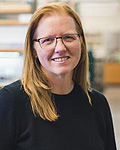Soft Materials for Studying Hard Biological Problems
Soft Materials for Studying Hard Biological Problems
-
 1. Soft Materials for Studying Ha…
0
00:00/00:00
1. Soft Materials for Studying Ha…
0
00:00/00:00 -
 2. Fundamental biological questio…
237.20387053720387
00:00/00:00
2. Fundamental biological questio…
237.20387053720387
00:00/00:00 -
 3. Hydrogels
376.71004337671008
00:00/00:00
3. Hydrogels
376.71004337671008
00:00/00:00 -
 4. PEG-based hydrogels
516.5165165165165
00:00/00:00
4. PEG-based hydrogels
516.5165165165165
00:00/00:00 -
 5. PEG gels limit cell-matrix int…
655.588922255589
00:00/00:00
5. PEG gels limit cell-matrix int…
655.588922255589
00:00/00:00 -
 6. Dynamic niches for 4D cell cul…
791.89189189189187
00:00/00:00
6. Dynamic niches for 4D cell cul…
791.89189189189187
00:00/00:00 -
 7. Orthogonal bio-click reactions
906.20620620620628
00:00/00:00
7. Orthogonal bio-click reactions
906.20620620620628
00:00/00:00 -
 8. Peptides as mimics of ECM Prot…
1011.2445779112446
00:00/00:00
8. Peptides as mimics of ECM Prot…
1011.2445779112446
00:00/00:00 -
 9. Thiol-ene photo-click chemistr…
1114.2809476142809
00:00/00:00
9. Thiol-ene photo-click chemistr…
1114.2809476142809
00:00/00:00 -
 10. Thiol-ene chemistry
1181.6483149816484
00:00/00:00
10. Thiol-ene chemistry
1181.6483149816484
00:00/00:00 -
 11. Mesenchymal stem cells
1233.1664998331667
00:00/00:00
11. Mesenchymal stem cells
1233.1664998331667
00:00/00:00 -
 12. Thiol-ene reaction
1321.9552886219553
00:00/00:00
12. Thiol-ene reaction
1321.9552886219553
00:00/00:00 -
 13. Mesenchymal stem cells
1367.6343009676343
00:00/00:00
13. Mesenchymal stem cells
1367.6343009676343
00:00/00:00 -
 14. Healing critical sized bone de…
1389.7230563897231
00:00/00:00
14. Healing critical sized bone de…
1389.7230563897231
00:00/00:00 -
 15. Dynamic niches for 4D cell cul…
1510.11011011011
00:00/00:00
15. Dynamic niches for 4D cell cul…
1510.11011011011
00:00/00:00 -
 16. Stem cell-derived organoids
1568.0013346680014
00:00/00:00
16. Stem cell-derived organoids
1568.0013346680014
00:00/00:00 -
 17. Intestinal organoids from sing…
1686.986986986987
00:00/00:00
17. Intestinal organoids from sing…
1686.986986986987
00:00/00:00 -
 18. Intestinal organoids in degrad…
1887.8211544878213
00:00/00:00
18. Intestinal organoids in degrad…
1887.8211544878213
00:00/00:00 -
 19. Dynamic hydrogel microenvironm…
2028.9622956289625
00:00/00:00
19. Dynamic hydrogel microenvironm…
2028.9622956289625
00:00/00:00 -
 20. Dynamic Matrices
2096.83016349683
00:00/00:00
20. Dynamic Matrices
2096.83016349683
00:00/00:00 -
 21. Photodegradable click hydrogel…
2151.9519519519522
00:00/00:00
21. Photodegradable click hydrogel…
2151.9519519519522
00:00/00:00 -
 22. Colony forming efficiency is d…
2215.5488822155489
00:00/00:00
22. Colony forming efficiency is d…
2215.5488822155489
00:00/00:00 -
 23. Photodegradation with focused …
2261.9619619619621
00:00/00:00
23. Photodegradation with focused …
2261.9619619619621
00:00/00:00 -
 24. Crypt-like domains form in pho…
2355.1551551551552
00:00/00:00
24. Crypt-like domains form in pho…
2355.1551551551552
00:00/00:00 -
 25. Lgr5+ and dividing cells local…
2401.8351685018351
00:00/00:00
25. Lgr5+ and dividing cells local…
2401.8351685018351
00:00/00:00 -
 26. crypt morphology
2441.5415415415418
00:00/00:00
26. crypt morphology
2441.5415415415418
00:00/00:00 -
 27. Crypt formation results in the…
2456.122789456123
00:00/00:00
27. Crypt formation results in the…
2456.122789456123
00:00/00:00 -
 28. Photodegradation leads to a lo…
2468.2682682682685
00:00/00:00
28. Photodegradation leads to a lo…
2468.2682682682685
00:00/00:00 -
 29. How can you make systems?
2559.6262929596264
00:00/00:00
29. How can you make systems?
2559.6262929596264
00:00/00:00 -
 30. Adaptable Networks
2576.8768768768768
00:00/00:00
30. Adaptable Networks
2576.8768768768768
00:00/00:00 -
 31. Adaptable Materials
2657.424090757424
00:00/00:00
31. Adaptable Materials
2657.424090757424
00:00/00:00 -
 32. Adaptable hydrogels for regene…
2659.8264931598264
00:00/00:00
32. Adaptable hydrogels for regene…
2659.8264931598264
00:00/00:00 -
 33. Design of clickable allyl sulf…
2723.3566900233568
00:00/00:00
33. Design of clickable allyl sulf…
2723.3566900233568
00:00/00:00 -
 34. Amplified photodegradation wit…
2786.21955288622
00:00/00:00
34. Amplified photodegradation wit…
2786.21955288622
00:00/00:00 -
 35. Thick gel degradation and capt…
2850.7507507507507
00:00/00:00
35. Thick gel degradation and capt…
2850.7507507507507
00:00/00:00 -
 36. Templated organoids
2897.4307640974307
00:00/00:00
36. Templated organoids
2897.4307640974307
00:00/00:00 -
 37. Photoinduced network reorganiz…
2900.1001001001
00:00/00:00
37. Photoinduced network reorganiz…
2900.1001001001
00:00/00:00 -
 38. Photo-induced network reorgani…
2904.5378712045381
00:00/00:00
38. Photo-induced network reorgani…
2904.5378712045381
00:00/00:00 -
 39. Summary
2908.5085085085088
00:00/00:00
39. Summary
2908.5085085085088
00:00/00:00 -
 40. Acknowledgments
3004.8048048048049
00:00/00:00
40. Acknowledgments
3004.8048048048049
00:00/00:00 -
 41. Thank you!
3043.9773106439775
00:00/00:00
41. Thank you!
3043.9773106439775
00:00/00:00
 Kristi S. Anseth is the Tisone Distinguished Professor of Chemical and Biological Engineering and Associate Faculty Director of the BioFrontiers Institute at the University of Colorado at Boulder. Her research interests lie at the interface between biology and engineering where she designs new biomaterials for applications in drug delivery and regenerative medicine. Dr. Anseth is an elected member of the National Academy of Engineering (2009), the National Academy of Medicine (2009), the National Academy of Sciences (2013), and the National Academy of Inventors (2016). She is also a Fellow of the American Association for the Advancement of Science, the American Institute for Medical and Biological Engineering, American Institute of Chemical Engineers, and the Materials Research Society. Dr. Anseth currently serves on the Board of Directors of the American Institute of Chemical Engineers, Board of Trustees for the Gordon Research Conferences, and is an editor for Biomacromolecules and Progress in Materials Science. She is a proud alumna of Purdue, receiving her BS in 1992 from the School of Chemical Engineering and an honorary doctorate in 2016.
Kristi S. Anseth is the Tisone Distinguished Professor of Chemical and Biological Engineering and Associate Faculty Director of the BioFrontiers Institute at the University of Colorado at Boulder. Her research interests lie at the interface between biology and engineering where she designs new biomaterials for applications in drug delivery and regenerative medicine. Dr. Anseth is an elected member of the National Academy of Engineering (2009), the National Academy of Medicine (2009), the National Academy of Sciences (2013), and the National Academy of Inventors (2016). She is also a Fellow of the American Association for the Advancement of Science, the American Institute for Medical and Biological Engineering, American Institute of Chemical Engineers, and the Materials Research Society. Dr. Anseth currently serves on the Board of Directors of the American Institute of Chemical Engineers, Board of Trustees for the Gordon Research Conferences, and is an editor for Biomacromolecules and Progress in Materials Science. She is a proud alumna of Purdue, receiving her BS in 1992 from the School of Chemical Engineering and an honorary doctorate in 2016.


































































